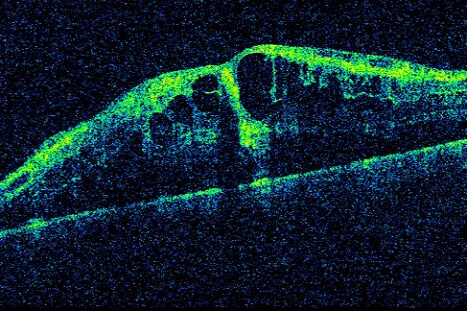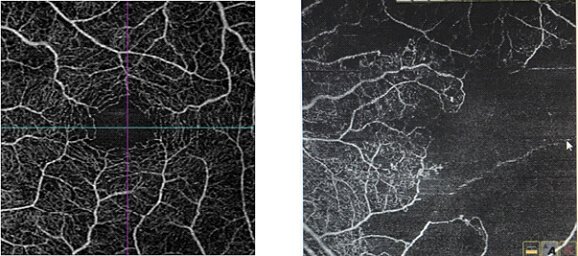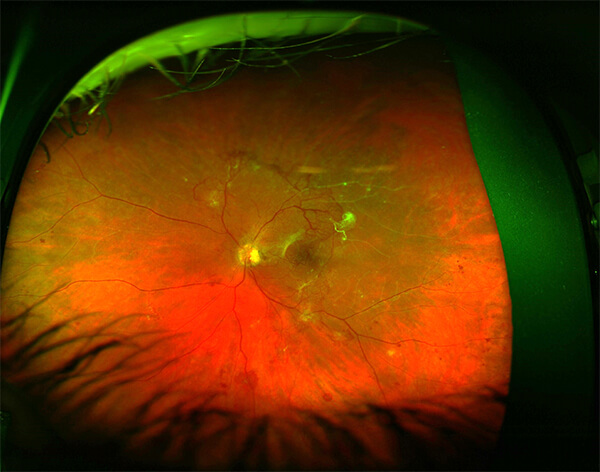Diabetic Retinopathy
Diabetic Retinopathy is an eye disease in which elevated blood sugar from diabetes damages the retina, the sensitive film responsible for vision at the back of the eye. DR is already a leading cause of blindness in the US, and it is only expected to increase, as more people are being diagnosed with diabetes every year. Studies have shown that DR can begin to threaten the vision of diabetic patients before they have symptoms. These same studies have shown that if Diabetic Retinopathy is caught early and treated, much of that vision loss can be prevented. There are 2 main stages of diabetic eye disease, Non-Proliferative Diabetic Retinopathy (NPDR) and Proliferative Diabetic Retinopathy (PDR). At any stage, swelling can also occur in the retina, known as Diabetic Macular Edema (DME).
Diabetic Macular Edema (DME)
Non-Proliferative Diabetic Retinopathy (NPDR): This is the early stage of diabetic eye disease and it can progress from mild to moderate to severe NPDR without symptoms. There may be no vision loss with NPDR. These stages don’t always require treatment, but are indications of how closely we need to check the eye. We start to consider treatment for diabetic eye disease when we see threatening swelling, or Diabetic Macula Edema (DME). DME is when tiny blood vessels leak, making the retina swell, and is the most common cause of vision loss in diabetes.

With NPDR, blood vessels can close off in response to the blood sugar elevation. This is called macular ischemia. When this happens, blood cannot reach the retina. If ischemia occurs in the macula, central vision can be lost permanently.

Proliferative Diabetic Retinopathy (PDR): This is the more advanced stage of diabetic eye disease. It happens when the retina starts growing new blood vessels in response to excessive ischemia. This is called neovascularization. These fragile new vessels often bleed into the vitreous. If they only bleed a little, you might see a few dark floaters. If they bleed a lot, it might block all vision. These new blood vessels can form scar tissue. Scar tissue can cause problems with the macula or lead to a detached retina. PDR is a very serious condition and can cause vision loss to both your central and peripheral vision. We have multiple forms of treatment for the bleeding and scar tissue, including medicine, laser and surgery.

As in most conditions, early diagnosis is the key. With new treatments, diabetic eye disease can be treated, and in some cases reversed. If left untreated for too long, permanent vision loss and even blindness can occur.
Treatments for DR
The best treatment for DR is keeping blood sugar as close to normal as possible. Ideally, average blood sugar should be less than 7.0 on the Hemoglobin A1C testing that is familiar to most diabetics. Controlling blood pressure and keeping cholesterol in normal range can also help avoid DR. Finally, smoking can make DR worse, and is best avoided.
Once DR advances to the point of treatment, there are multiple ways vision can be saved, or in some cases restored. Ocular injections of medicine have been used since 2005 to address some of the underlying causes of DR, and these have become the standard of care for many forms of this disease. These can be administered painlessly in the office, and have saved and restored sight for millions of diabetics.
Other treatments include laser to leaky vessels, and surgery for scar tissue and blood. While these are more advanced treatments that most patients don’t need, they can be incredibly effective in saving vision in cases of more severe DR.



